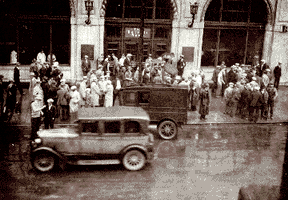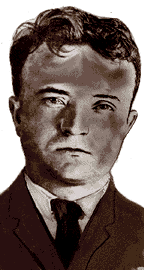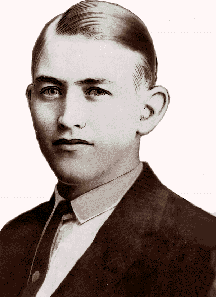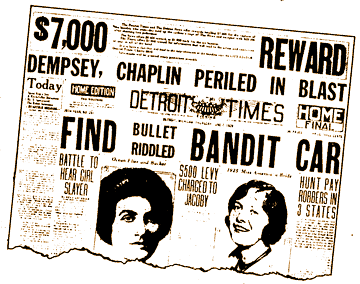The Great Detroit News Payroll Robbery
Not only did the rival Detroit Times beat the News to the street with its extra on the robbery, it showed that it had people freely roaming the News building when it ran a detailed map of the payroll department. At right is the next day's edition of the Times with stories detailing the police chase of the robbers and rewards for their capture. Click here for text of the reward story.

The daring payroll holdup of News business offices was surpassed only by the embarrassment that followed.
For The News, proud of its many "beats," was beaten by more than an hour on the story of its own holdup, June 6, 1928. The Detroit Times, which suspended publication in 1960, was selling extras at The News door before News presses started to roll.
Here's how it happened:
At 11 a.m., shortly before the noon edition was to go to press, five men carrying paper bags entered the building and walked to second floor business offices. At a given signal the bags were ripped open, baring shotguns, and the robbery was underway.

In The News city room, Mabel Kerr, veteran switchboard operator, was talking to Harvey Patton (father of a later Detroit News managing editor) when another News employee who had witnessed the commotion in the business office, entered the city room and announced, "My gawd, we are being robbed." Miss Kerr relayed the report to Patton, who summoned police.
A shot rang out. Paymaster Edward Krell rushed into the city room, brandishing a .45 revolver and shouting, "Where did they go?"
Then a city editor announced, "Maybe we ought to have a story." But most of his staff was looking out a bay of windows at the excitement down on the street.
Five men had entered the building and a sixth waited in a getaway car on Lafayette. Paul Jaworski, the ringleader who subsequently died in the electric chair for a payroll holdup-murder in Pennsylvania, gave the details to police when he eventually was captured.

Jaworski said the gang expected to get $65,000. (It settled for $14,826.) He planned the holdup, he admitted, after "casing" News offices for several days.
After seizing available payroll envelopes the bandits raced down a stairway to the first floor lobby. There they met Sgt. George Barstad, a traffic patrolman who rushed into the building to investigate the commotion. Barstad was shot to death on the front steps by two of the gunmen.
In the street, the gang confronted Patrolman Guyot N. Craig, a police marksman. Craig emptied his gun at the fleeing car, leaving at least one bullet hole in the stolen Ford.
In the exchange of gunfire, Craig suffered minor wounds. So did Joseph W. Worten, a News advertising salesman, who was sprayed with gunshot pellets in his legs and hand as he approached the building, apparently unaware of the robbery in progress.
While this was going on, the Times, acting on the first police report, was racing into print. Times reporters scurried through The News building.
Times extras already were for sale in the lobby amid milling police and ambulance drivers. The next day the Times' showing the thoroughness of its reporters, published a map of The News business offices, detailing the route taken by the gunman.
Eventually, Thomas Paluzynski (alias Pallas) and Harry Watson were convicted and sentenced to life in prison.


